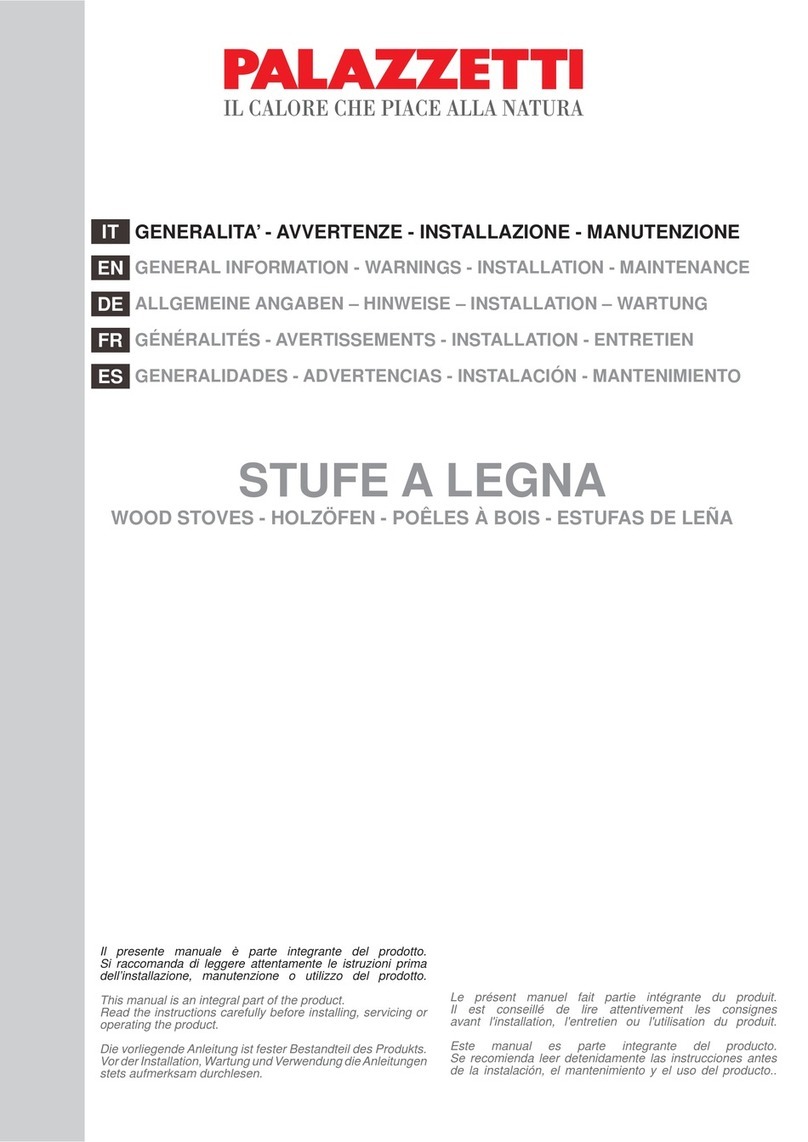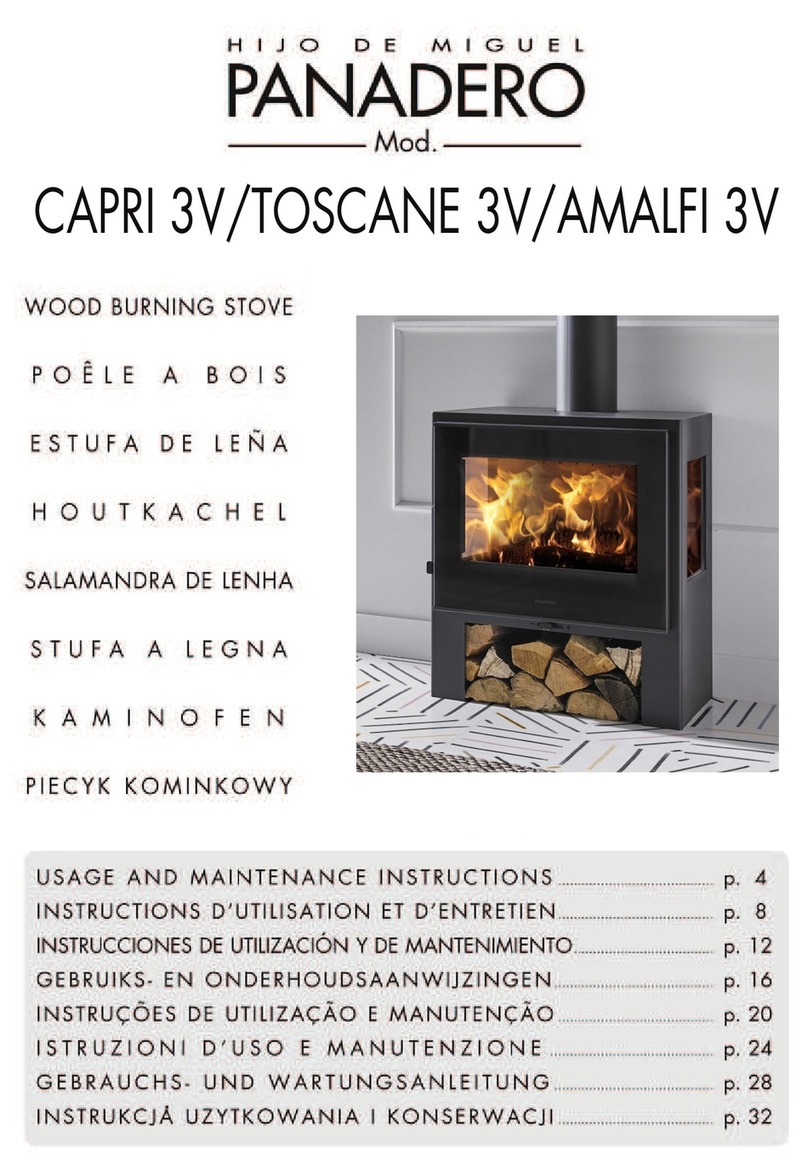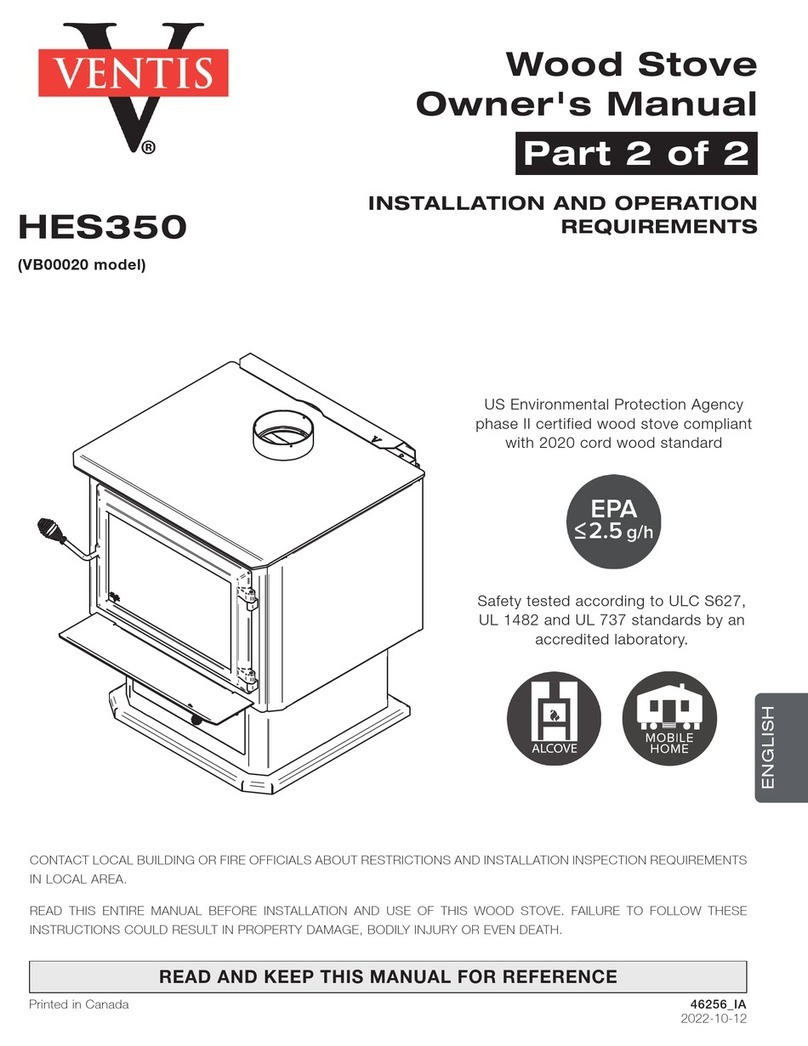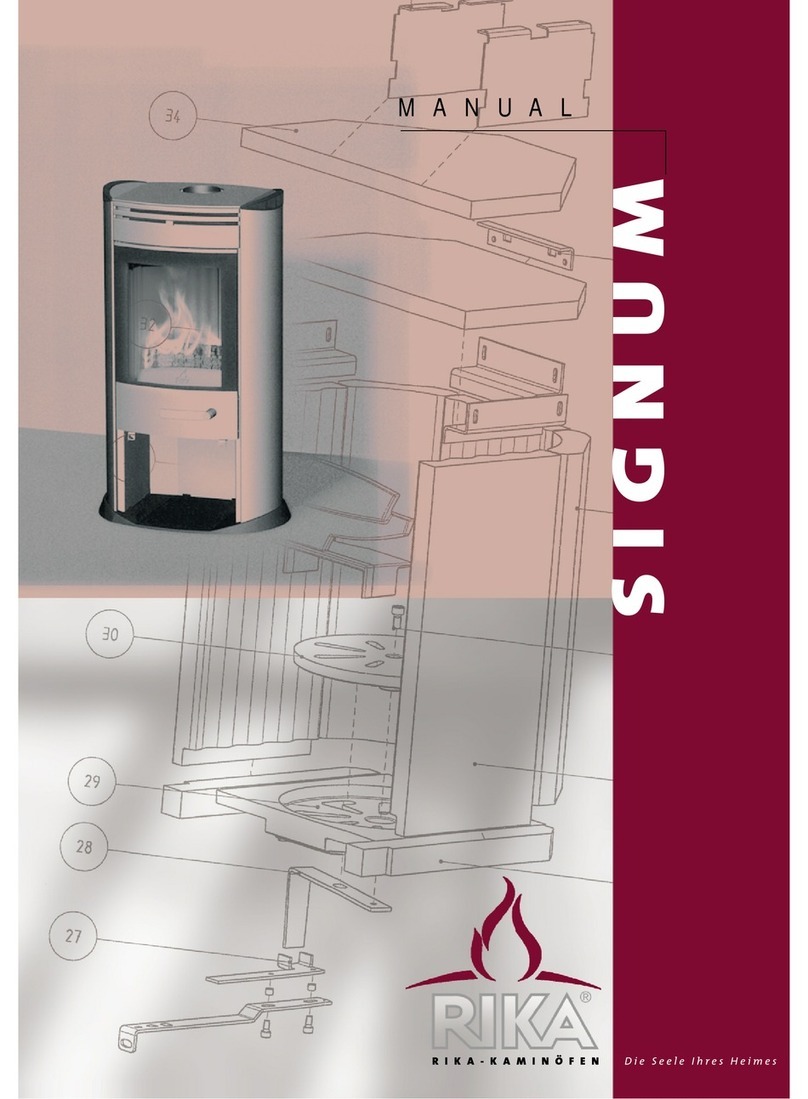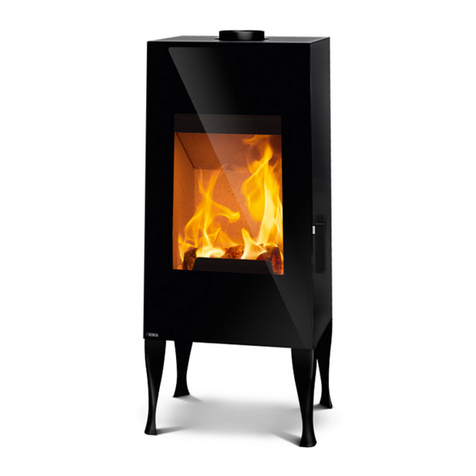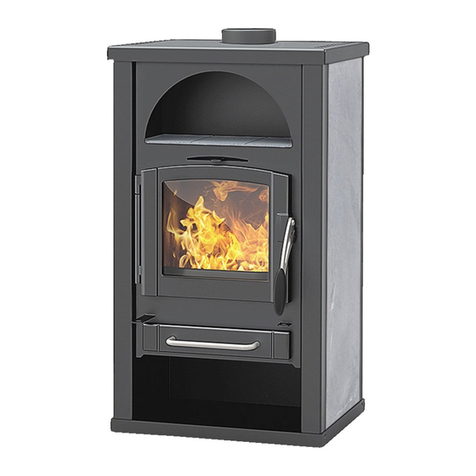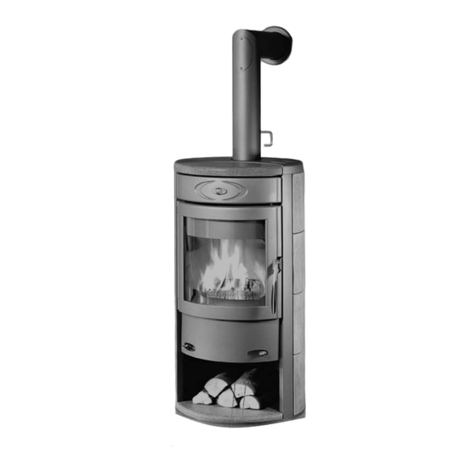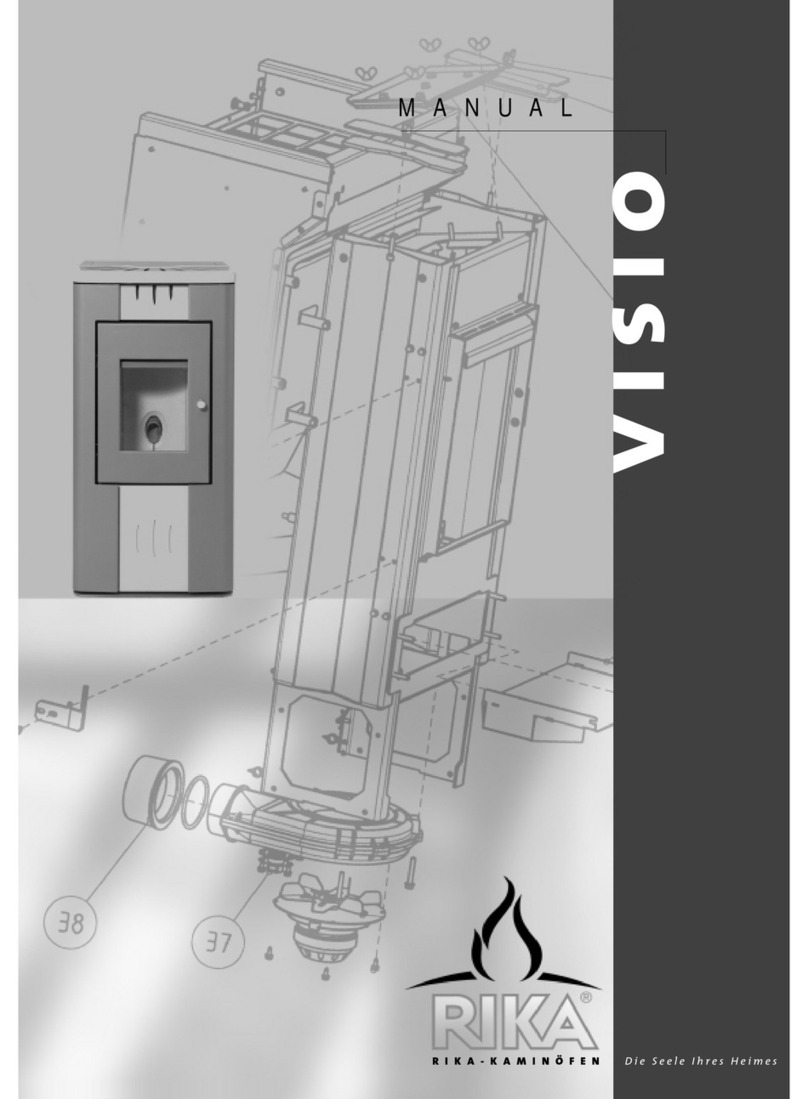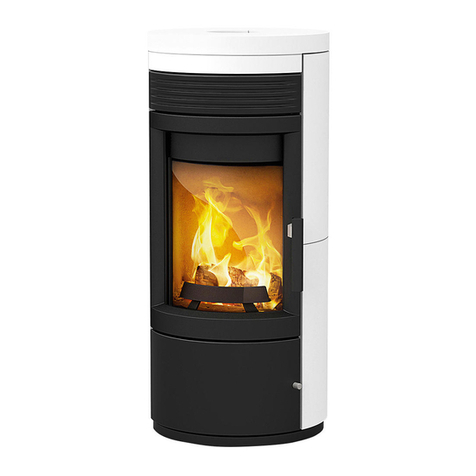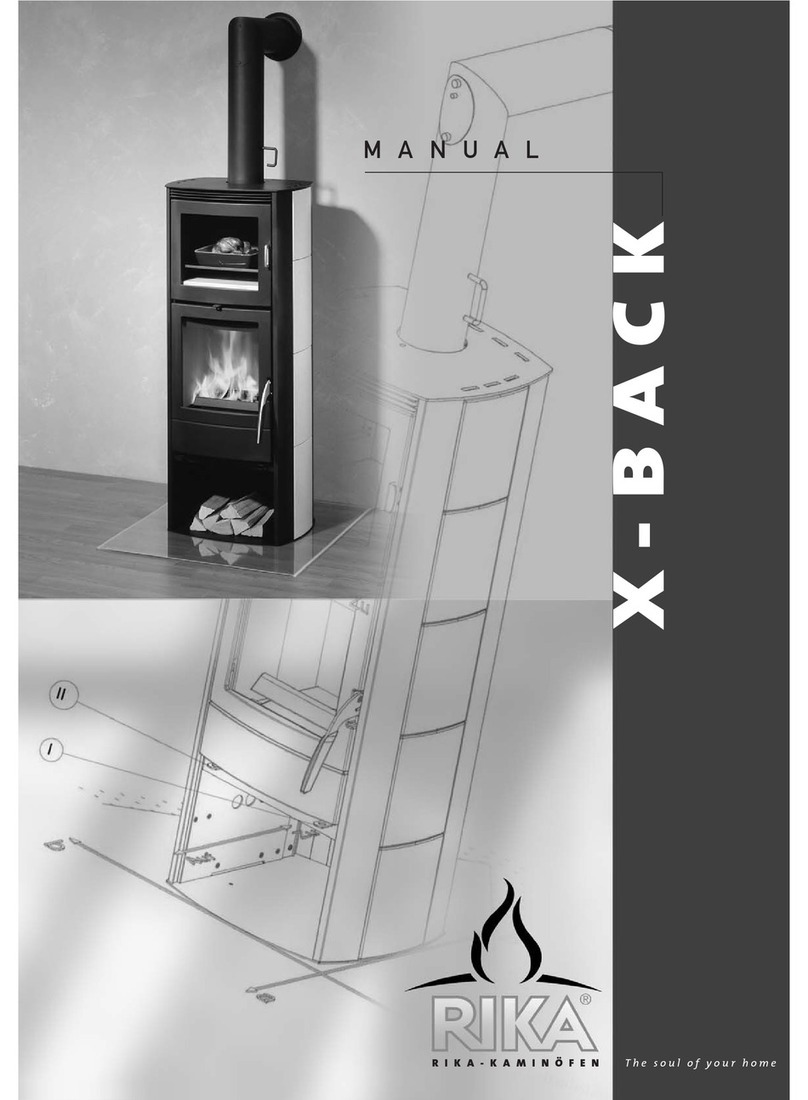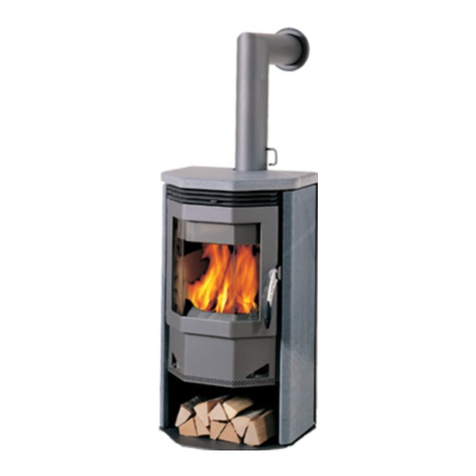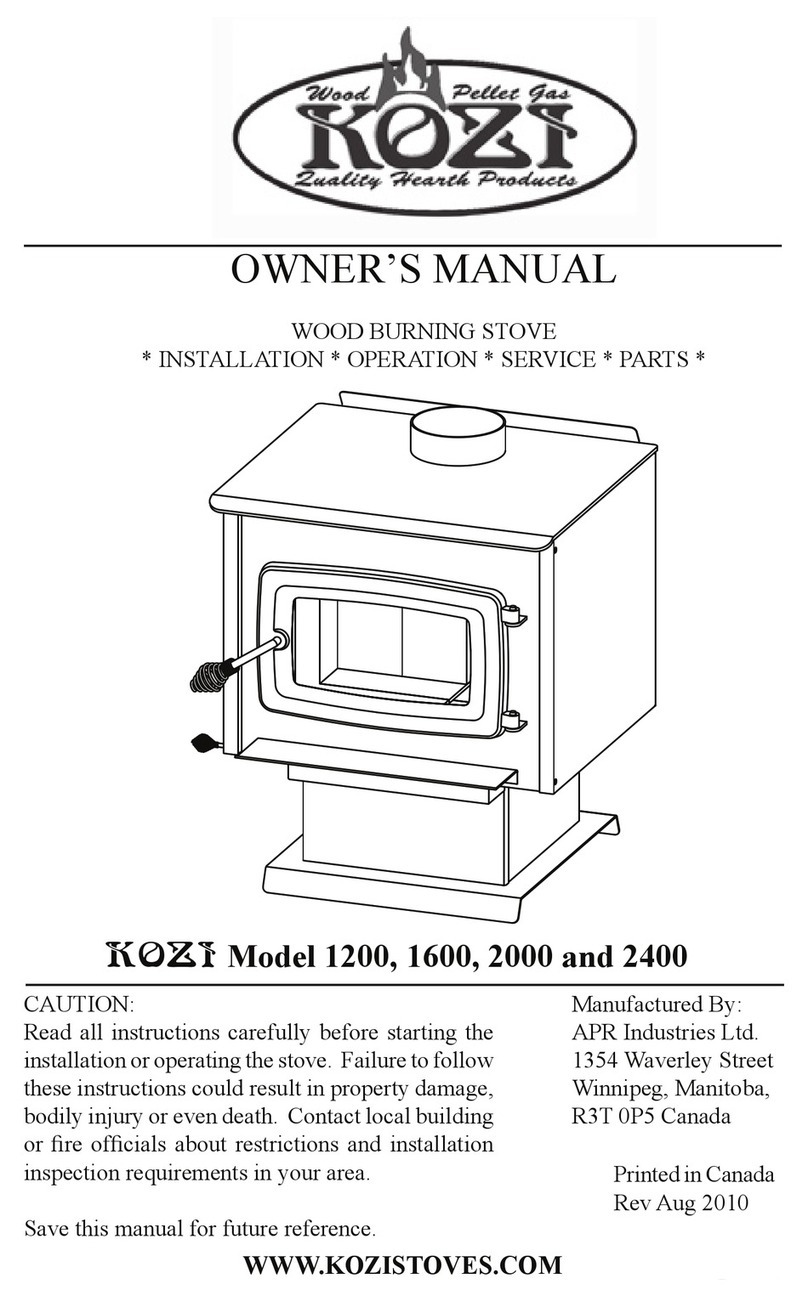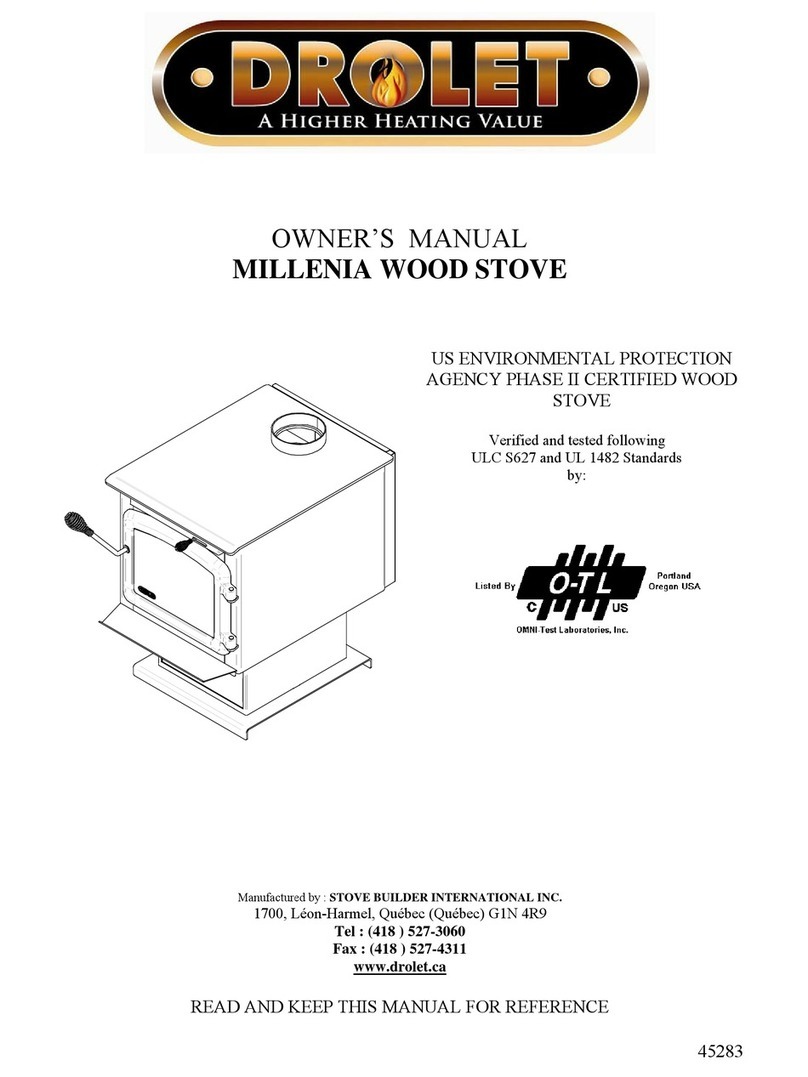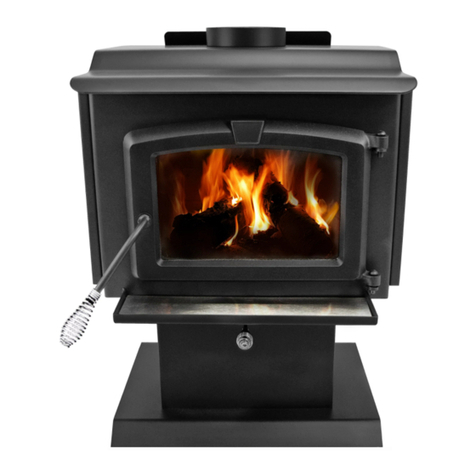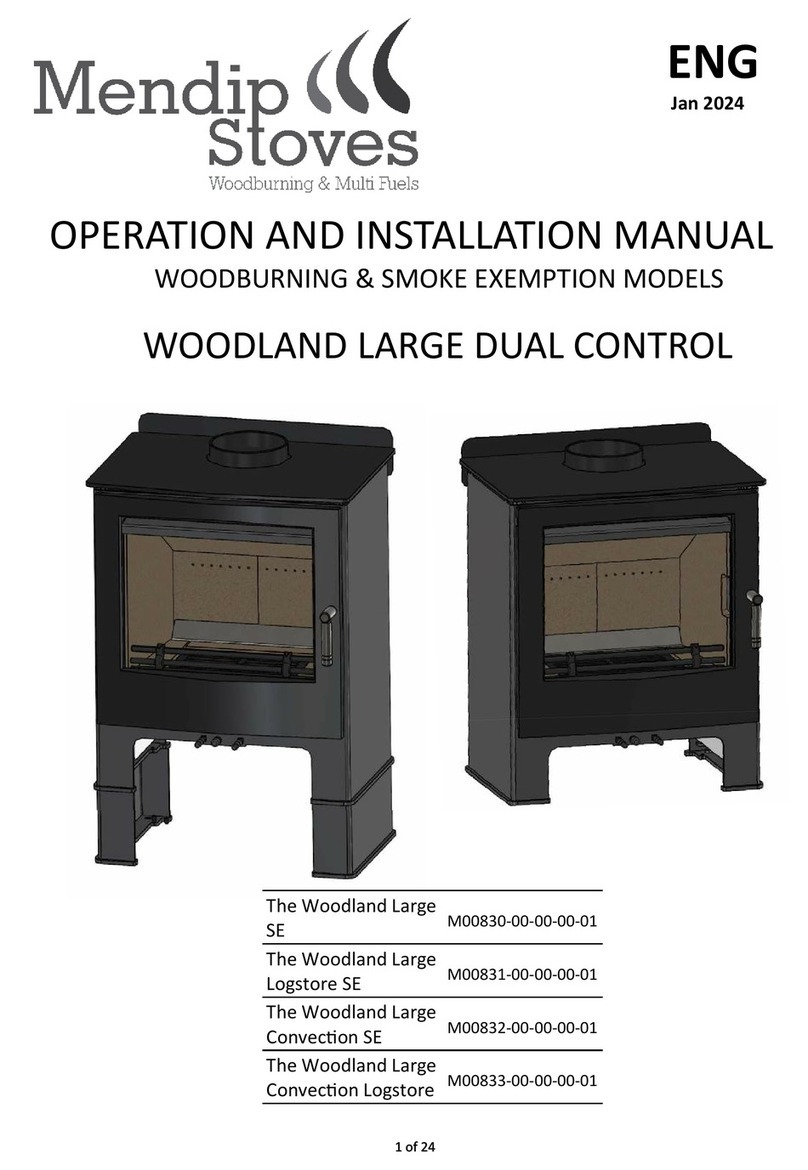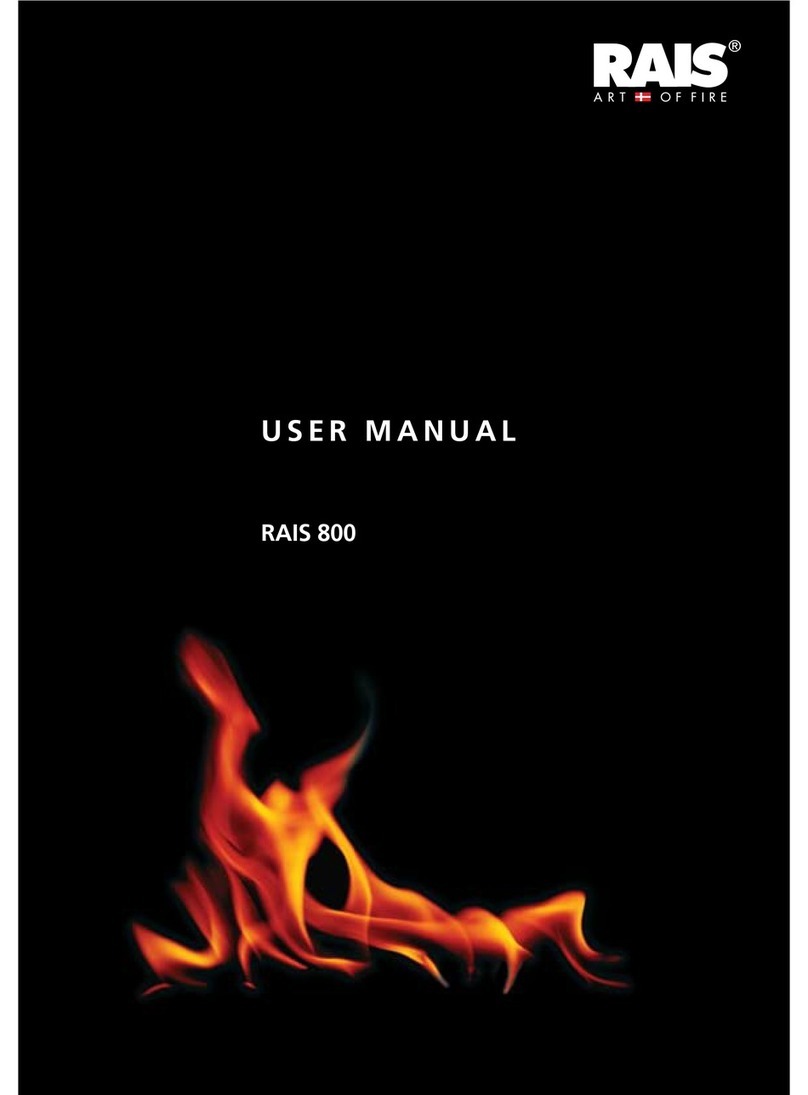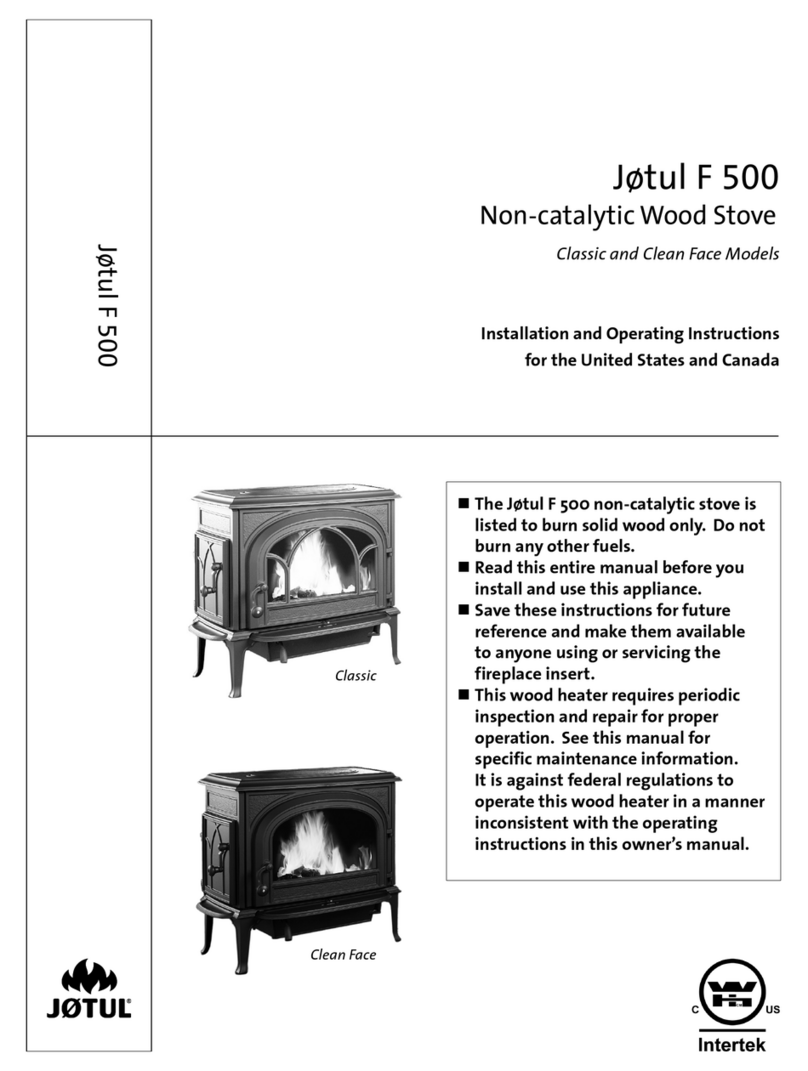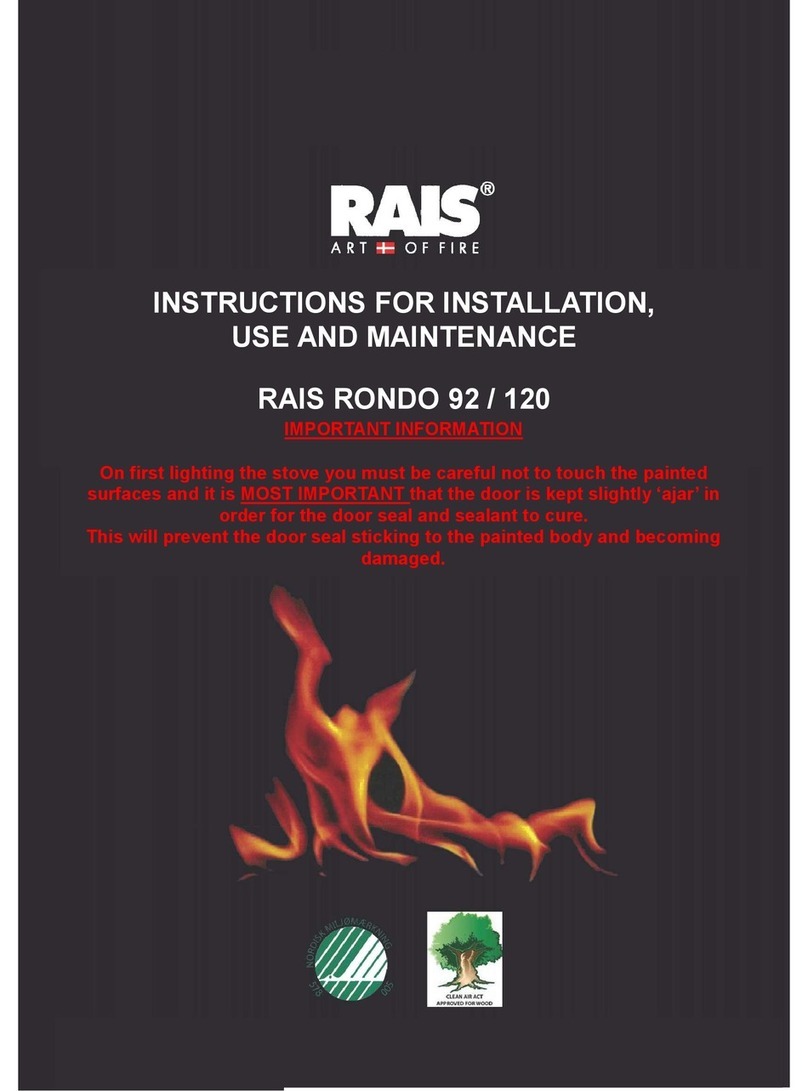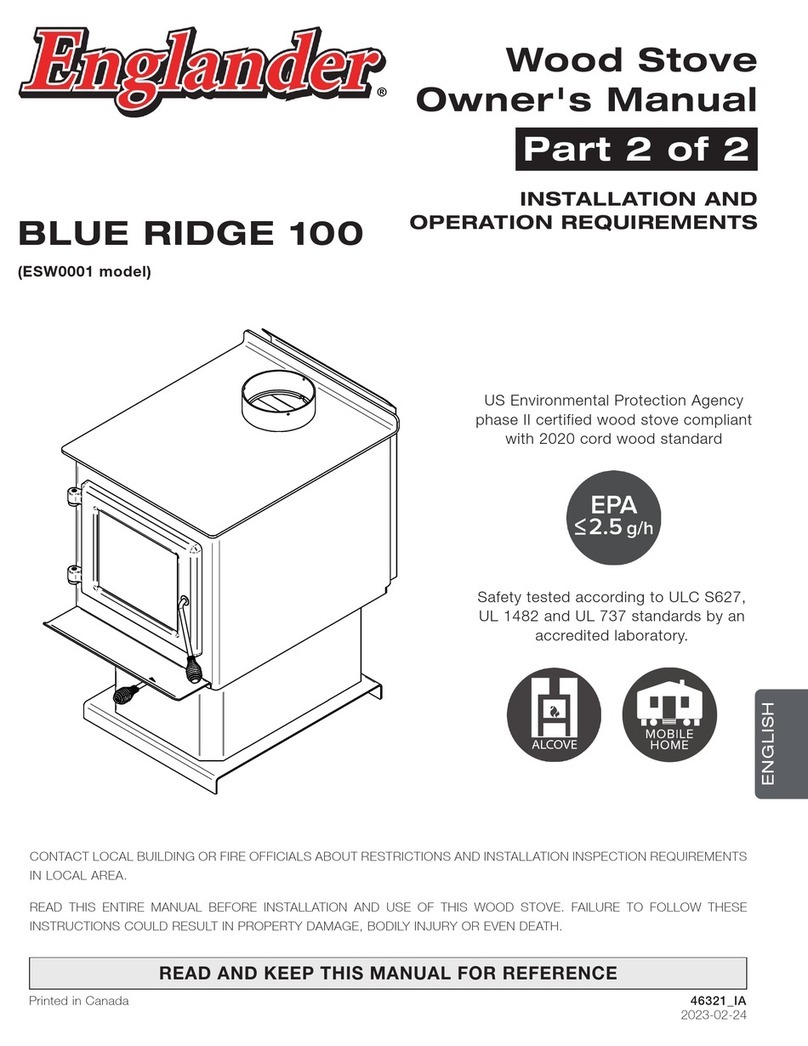1.8
The fire door must only be opened for
adding fuel and must then be closed
again, as this could otherwise lead to a
danger to other fires that are also connec-
ted to the chimney.
1.8.1
When the fire is not in operation, the fire
door must be kept closed.
1.9
When using wet fuel and if operation is
throttled too much, the chimney can soot
up, i.e. easily combustible materials such
as soot and tar can be deposited and this
can lead to a chimney fire.
Should this happen, close all air inlet sli-
des and flaps. Call the fire brigade and get
your self and all other occupants to safety.
1.10
The primary and/or secondary air supply
must be open before you open the com-
bustion chamber door.
ATTENTION: The size of the fire door means that,
particularly when reheating blazing flames, the
door must not be opened abruptly, in order to pre-
vent the flames from springing out.
9
E N G L I S H
1.2 Flue pipe connection
Flue pipes are a particular hazard source
in respect of escape of poisonous gas and
fire hazard. Obtain the advice of an
appointed specialist company in respect
of laying and fitting the pipes.
When connecting the flue pipe to the
chimney, in the area of walls cladded
using wood, please follow the relevant fit-
ting directives.
1.3
You must follow the flue gas formation in
the event of unfavourable weather (atmos-
pheric inversion) and the draught conditi-
ons.
If too little combustion air is added smoke
can enter your house or flue gases can
escape. Additionally harmful deposits can
arise in the fire and in the chimney.
In the event that flue gas escapes let the
fire go out and check if all air inlet ope-
nings are free and the flue gas feeds and
the fire pipe are clean. In cases of doubt
you must inform the master chimney
sweep, as a fault in the draught could be
due to the chimney.
1.4
Before adding new fuel, push the embers
together.
1.5
Only use a suitable tool from our acces-
sory range for pushing the embers
together, and ensure that no combustible
material falls out of the fire.
1.6
Use the devices supplied with your fire,
uch as the protective gloves or the cold
hand to open the doors, as well as for ope-
rating the control elements.
1.7
Design 1 fires (BA 1):
These fires must only be operated with the
fire door closed.
Important information relating to ROOM AIR DEPEN-
DENT and ROOM AIR INDEPENDENT OPERATION:
Your stove has been tested as a room air dependent
stove in accordance with EN 13240 and does not
fulfil the German requirements for room air indepen-
dent operation.
In combination with room air technical installations
(e.g. controlled ventilation and extraction systems,
dust extraction systems, etc) it must be ensured
that the stove and the room air technical installati-
ons are monitored and made safe (e.g. via a diffe-
rential pressure controller, etc.). The required com-
bustion air flow of approx. 40 m3/h must be assu-
red.
Please observe any local directives and rules in
consultation with the responsible chimney sweep.


